How to Teach Your Dog to Lie Down on Cue in 3 Easy Steps
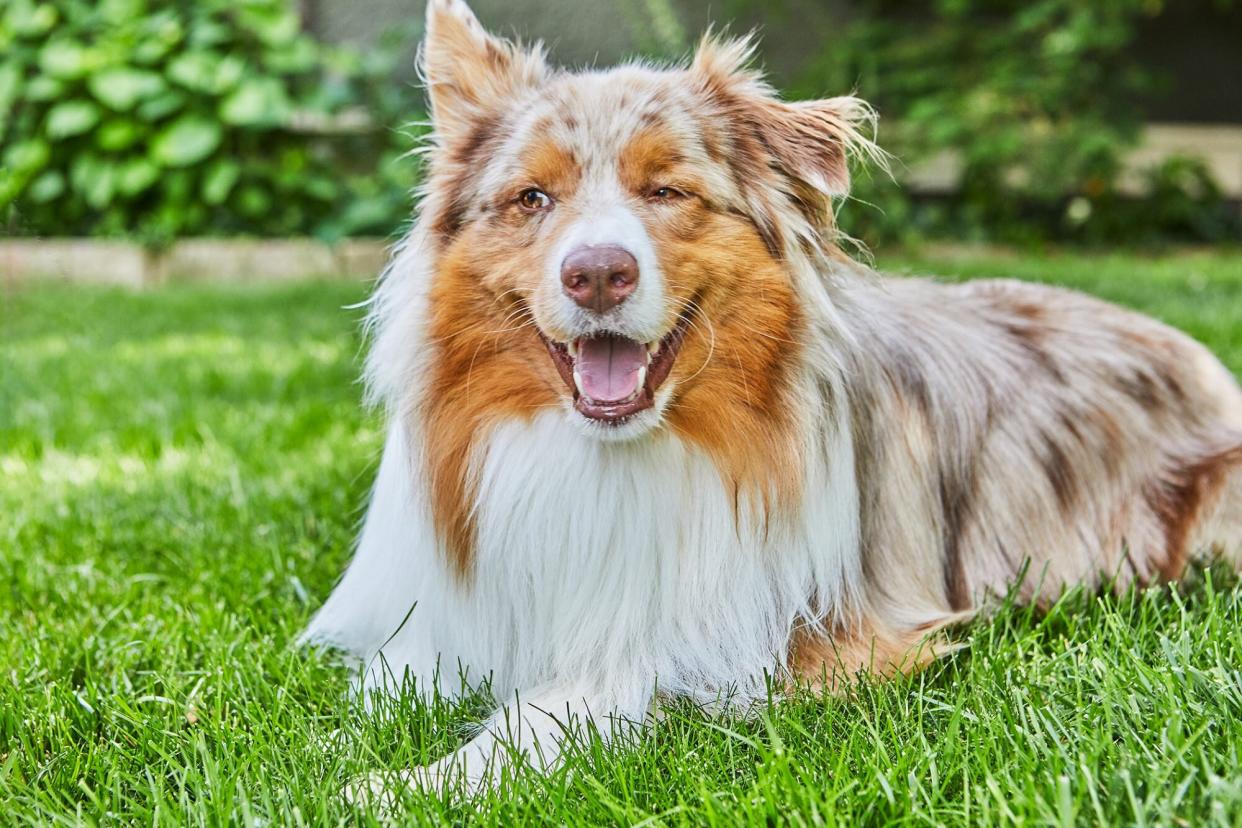
Jason Donnelly
When teaching dog training classes, especially for therapy dogs, "down" is one of the top five cues I like to focus on. That's because teaching your dog the behavior of lying down is so useful in a variety of contexts.
A down cue can be used as the building block for your dog to learn other fun behaviors and tricks like "roll over" or "go-to-bed." It's also the foundation for teaching your dog to relax or rest by you when company comes over-or when you want to take your pup with you to a restaurant patio.
When you follow these simple and quick steps, and create opportunities for positive reinforcement, your dog will learn to lie down on cue in no time at all!
Things to Have Ready Before You Start
Really Good Reinforcers and a Marker
A reinforcer (or sometimes called a "reward") is something your dog loves and easy for you to give. For 99 percent of dogs this is some kind of food or small, tasty treat. Foods like cut-up hot dogs, small pieces of cheese (if your dog doesn't have a sensitive stomach), lunch meat, or store-bought training treats are all good options. Let your dog pick. Your dog should be able to decide which type of reinforcer, treat or piece of food, they want to have.
A marker (or conditioned stimulus) is a sound or signal that pinpoints (marks) the exact moment your dog did something that earned them a reinforcer (the treat). A clicker is a great example of a conditioned marker. If you don't have a clicker you can use a consistent word like "yes" or"good" or a visual signal like a thumbs up, but pick one and stick to it.
Mark the behavior the second you see it. The more accurate and quick your mark is, the more effective your teaching becomes. (For the purposes of this article, we'll use the word "click" to indicate when you mark a behavior. If you use a different marker, just do that instead of clicking.)
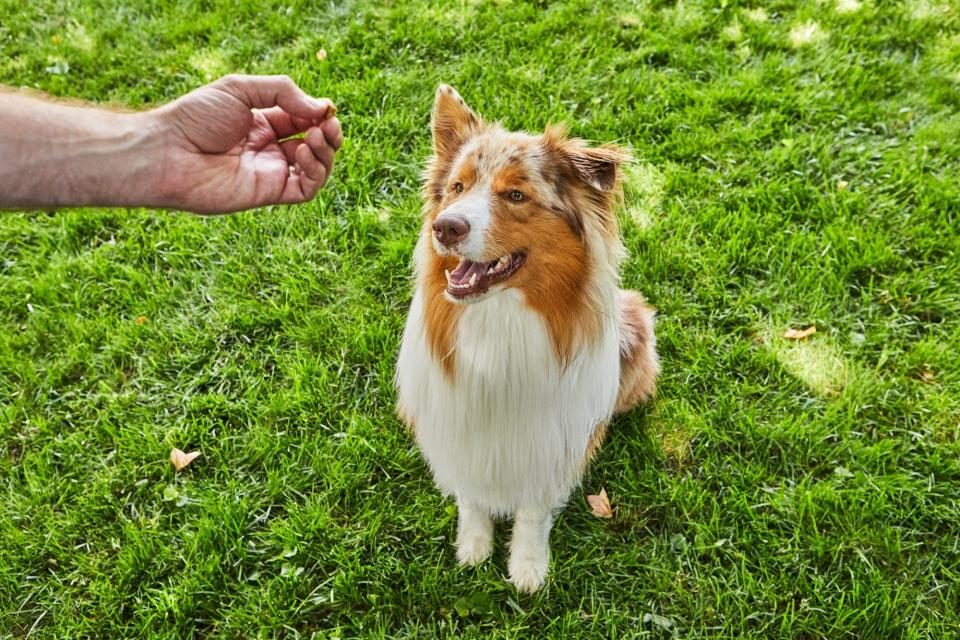
Jason Donnelly A treat doesn't have to be big to be a good reinforcer. Small nibbles are just as tasty—and effective.
3 Easy Steps to Teach Your Dog to Lie Down on Cue
1. Lure Your Dog into a Lying Down Position
It's easier to begin if you've already taught your dog how to sit on cue. Ask your dog to "sit" and then when he is sitting in front of you, use a treat to lure him into a lying down position. Luring is when you use something your dog will follow, like a treat, to move them into a position. Hold the treat in front of your dog's nose and slowly lower it downward so that your dog's nose is pointing between their paws and the treat touches the floor. Your dog will likely try to "follow" with their nose, resulting in them lowering their front legs, then their back legs. The second their belly touches the floor, click, and provide the reinforcer (treat). Repeat this a few times until your dog begins to anticipate the movement of the treat and starts to move into a downward position, with his belly touching the floor.
Pro Trainer Tip: The faster you click and then provide a treat the better (one click, one treat!). Avoid any lag time between the click and the delivery of the treat, otherwise you run the risk of your dog not understanding which behavior earned them a treat. For instance, if he gets back up before you click and treat, he may think he earned the treat for getting up, not lying down.
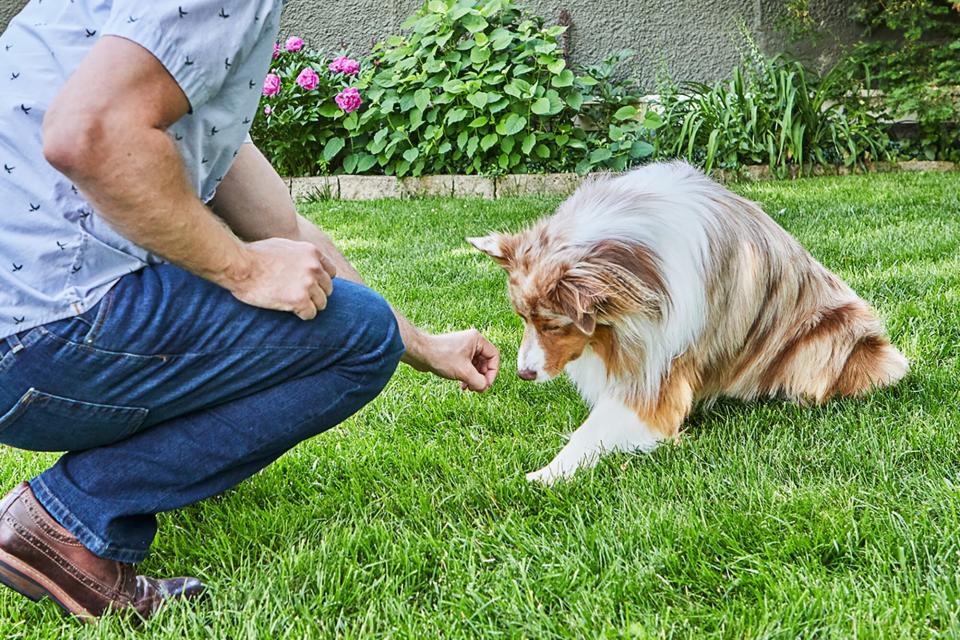
2. Add a Visual Cue
Now you can add a visual cue (hand signal), fading out the treat lure. Pick your hand signal-a finger pointing downwards or your open hand with palm facing down works great. Without a treat in your hand, slowly present your signal in a downwards movement, same as you did with a treat in your hand in the previous step. The moment your dog lays down, click, and immediately give them a treat. Repeat.
Pro Trainer Tip: It's important to fade out the treat lure as soon as you can and only use the treat as a reinforcer once your dog has mastered the visual cue.
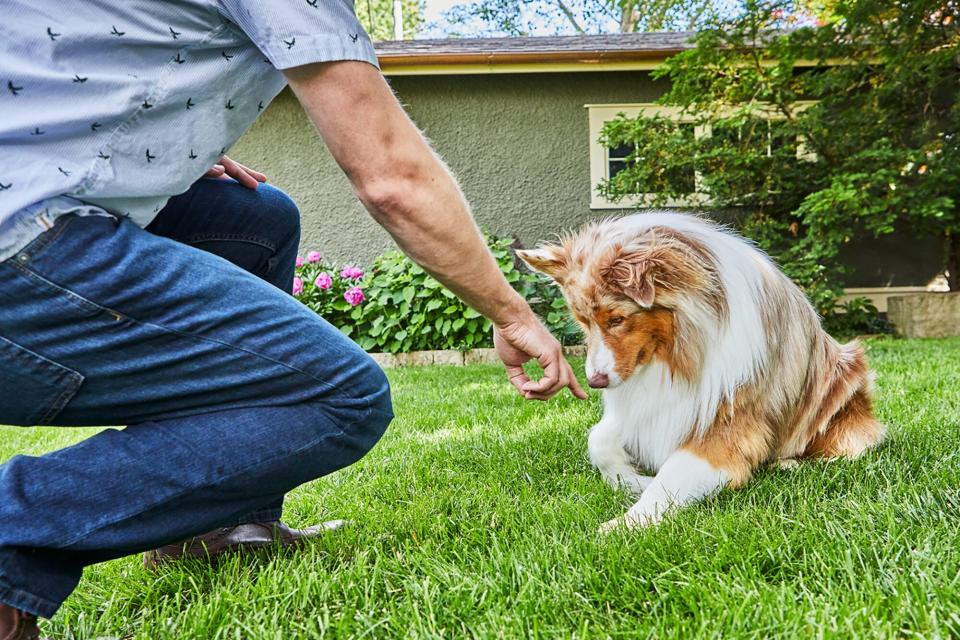
3. Add a Verbal Cue
To add a verbal cue, say the cue "down" and then immediately give your hand signal. The moment your dog begins to lay down, mark the behavior (click) and give the treat. Repeat this a few times. Once your dog begins to understand that saying the word "down" and using a hand signal mean the same behavior, you can use either, deciding which cue you prefer (or better yet, your dog does) in different contexts. Since dogs pay attention to the whole picture (your entire body) during a learning session, teaching them both a visual cue and verbal cue enhances communication between you and your dog and can help prevent confusion.
Pro Trainer Tip: Be sure to not say the verbal cue for down at the same time you show your visual cue. Otherwise, your dog learns that both cues must be given together before they do the behavior. And make sure everyone in your household are using the same cues.
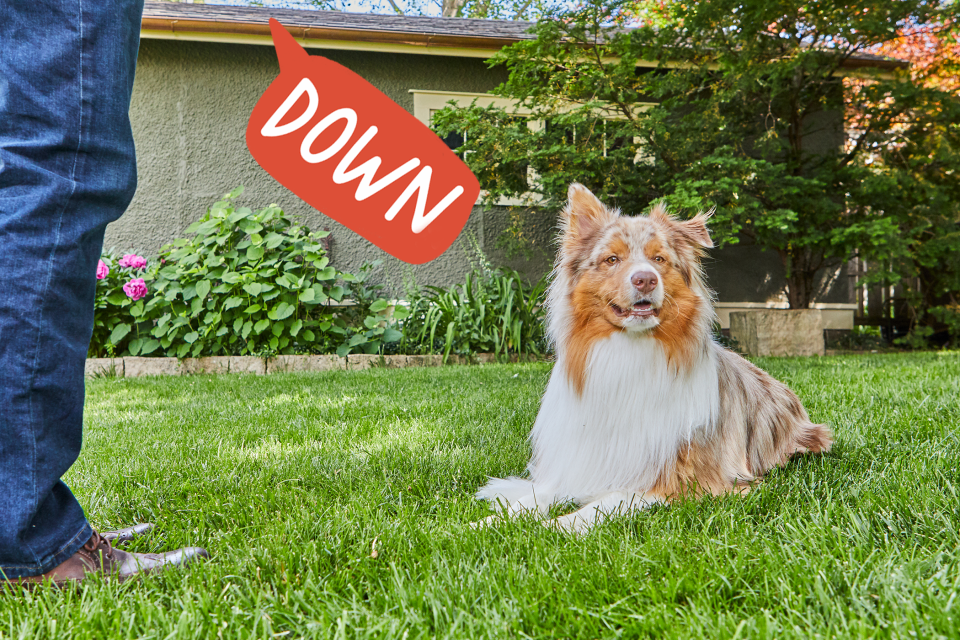
Through the power of positive reinforcement you can teach your dog to lie down-and all sorts of other handy skills and behaviors. With each new learned behavior, your dog becomes a confident, happy canine, ready to accompany you on many adventures.

